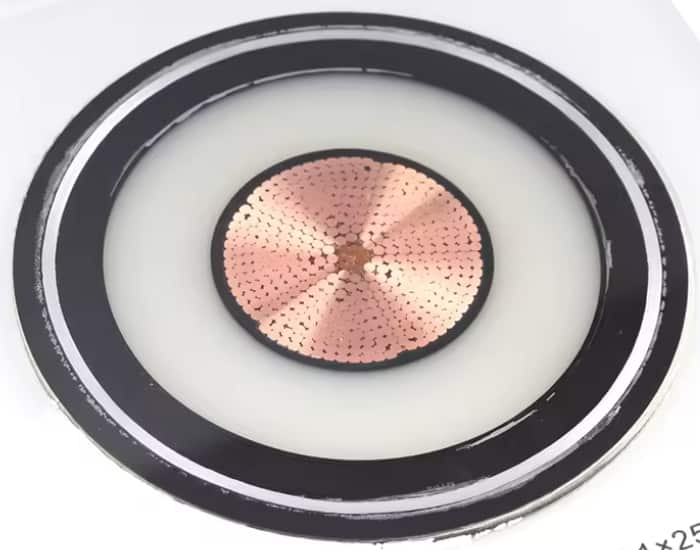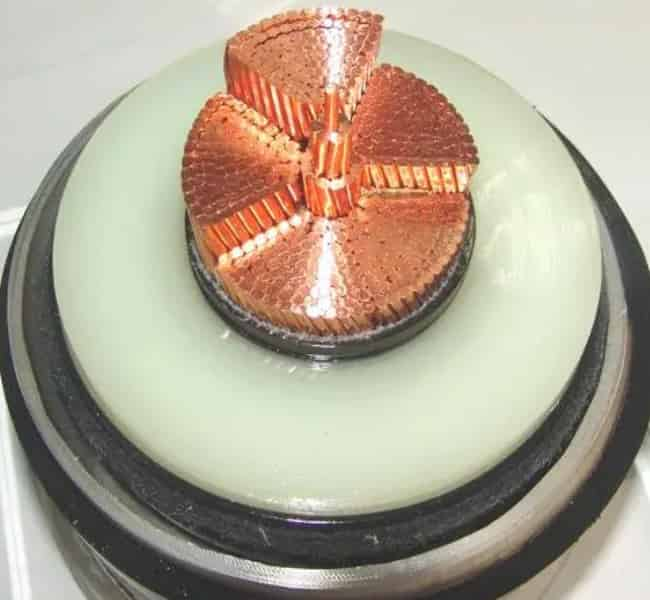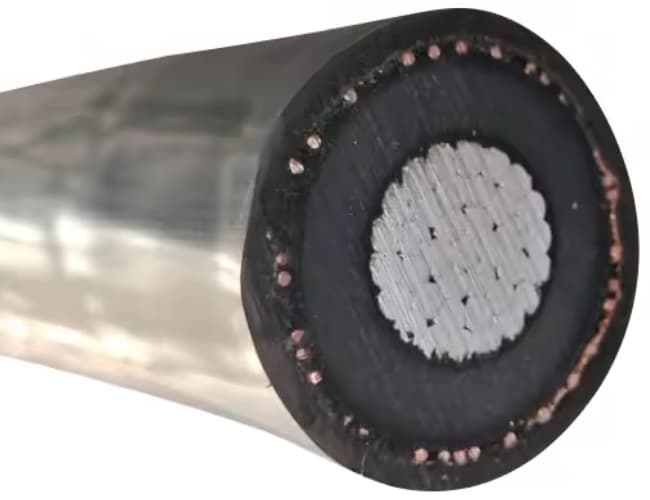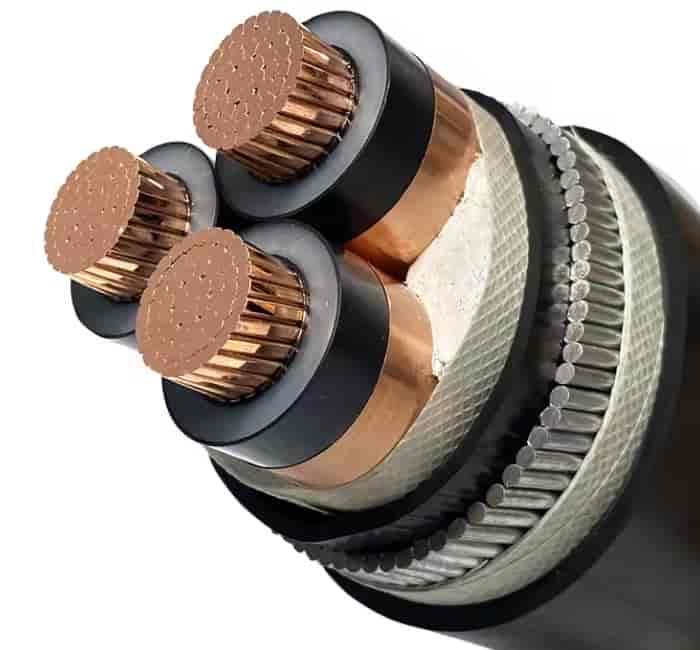
HT Cable play a crucial role in electrical power transmission and distribution. They are designed to carry electricity at high voltages, ensuring efficient power delivery across long distances. In this article, we will explore the various aspects of HT cables, including their types, applications, pricing, and more. Whether you are looking for information on HT cables for a specific project or simply want to understand their importance in modern electrical systems, this guide will provide you with all the essential details.
What is HT Cable?
HT cables, or High Tension cable, are used to transmit electrical power at voltages typically ranging from 11kV to 33kV and beyond. These cables are integral to the infrastructure of power transmission systems, ensuring that electricity generated at power plants can reach substations and, ultimately, end-users efficiently and safely.
HT Cable vs. LT Cable
The primary difference between HT (High Tension) and LT (Low Tension) cables lies in their operating voltage. LT cables are designed for voltages up to 1kV, while HT cables handle voltages above 1kV. HT cables are used in high-voltage transmission lines, whereas LT cables are typically found in residential and commercial electrical installations.

Types of HT Cables
HT cables come in various types, each designed to meet specific requirements in terms of voltage, insulation, and environmental conditions. Below are some of the common types of HT cables:
1. XLPE HT Cable
Cross-linked Polyethylene (XLPE) cables are among the most popular types of HT cables. They are known for their excellent thermal resistance, electrical properties, and longevity. HT XLPE cables are widely used in underground and overhead power transmission systems.
Applications:
- Power transmission and distribution networks
- Industrial power systems
- Underground and overhead installations
2. 3 Core HT Cable
3 core HT cables consist of three insulated conductors, making them ideal for three-phase power systems. These cables are commonly used in power distribution networks and are available in various configurations to suit different voltage levels.
Applications:
- Three-phase power systems
- Industrial power distribution
- Substations and transformers
3. HT ABC Cable
Aerial Bundled Cables (ABC) are a type of overhead power line that uses several insulated wires bundled together. HT ABC cables are used in overhead power distribution systems, especially in areas where space is limited or where environmental conditions make traditional overhead lines impractical.
Applications:
- Overhead power distribution in urban and rural areas
- Temporary power supply in construction sites
- Areas with dense vegetation or wildlife
4. HT UG Cable
Underground (UG) cables are designed for burying beneath the ground, providing a safer and more reliable alternative to overhead lines. HT UG cables are insulated and protected to withstand the harsh conditions underground.
Applications:
- Urban power distribution networks
- Suburban and rural underground power lines
- High-density areas where overhead lines are impractical

HT Cable Specifications
HT cables are available in various sizes and specifications to meet the needs of different applications. Some of the key specifications to consider include:
1. 11kV HT Cable
11kV HT cables are commonly used in medium voltage power distribution networks. They are available in both single-core and three-core configurations.
Applications:
- Medium voltage power distribution
- Substations and transformers
- Industrial power systems
2. 33kV HT Cable
33kV HT cables are used for high voltage transmission lines. These cables are designed to handle higher voltages and are often used in power transmission networks that span long distances.
Applications:
- High voltage power transmission
- Large industrial power systems
- Renewable energy projects
3. 95 sq mm HT Cable
95 sq mm HT cables are used in applications that require a specific conductor size. The 95 sq mm specification refers to the cross-sectional area of the conductor, which determines the cable’s current-carrying capacity.
Applications:
- Medium to high voltage power distribution
- Industrial and commercial power systems
- Renewable energy installations
4. 240 sq mm HT Cable
240 sq mm HT cables are used in high current applications. These cables are designed to carry large amounts of electrical power, making them suitable for heavy-duty industrial and commercial applications.
Applications:
- High current power transmission
- Large-scale industrial power systems
- Power distribution in urban areas
5. 300 sq mm HT Cable
300 sq mm HT cables are among the largest sizes available and are used in applications that require the highest current-carrying capacity. These cables are often used in critical infrastructure projects.
Applications:
- High current power transmission
- Large industrial plants
- Power distribution in dense urban areas
HT Cable Price
The price of HT cables varies depending on several factors, including the type of cable, its size, the materials used, and the manufacturer. Below are some general guidelines on HT cable pricing:
1. HT Cable Price Per Meter
The price of HT cables is often quoted per meter. Factors that influence the price per meter include the cable’s cross-sectional area, insulation type, and voltage rating. For example, 11kV HT cables typically cost less per meter than 33kV HT cables due to the differences in voltage rating and construction.
2. 95 sq mm HT Cable Price
The price of a 95 sq mm HT cable can vary depending on the manufacturer and the materials used. Generally, cables with a larger cross-sectional area, such as 95 sq mm, tend to be more expensive due to their higher current-carrying capacity and the increased amount of conductor material required.
3. 240 sq mm HT Cable Price
240 sq mm HT cables are more expensive than smaller cables due to their higher current-carrying capacity and larger size. These cables are often used in high-demand applications, which justifies their higher price.
4. 300 sq mm HT Cable Price
300 sq mm HT cables are among the most expensive HT cables available. Their high price is due to the large amount of conductor material required and the specialized manufacturing processes needed to produce cables of this size.

Factors Affecting HT Cable Prices
Several factors can influence the price of HT cables:
1. Material Costs
The cost of raw materials, such as copper or aluminum, can significantly impact the price of HT cables. Copper is generally more expensive than aluminum, so HT cables with copper conductors will typically cost more than those with aluminum conductors.
2. Insulation Type
The type of insulation used on an HT cable can also affect its price. XLPE insulation, for example, is more expensive than other types of insulation due to its superior thermal and electrical properties.
3. Manufacturing Processes
The complexity of the manufacturing process can also impact the price of HT cables. Cables that require specialized manufacturing techniques, such as those with multiple layers of insulation or shielding, will generally cost more.
4. Market Demand
Market demand can also influence HT cable prices. In times of high demand, prices may rise due to supply constraints, while prices may fall when demand is low.
Installation and Maintenance of HT Cables
Proper installation and maintenance of HT cables are crucial to ensuring their longevity and performance. Below are some key considerations:
1. Installation
- Tensioning: Proper tensioning is essential to avoid sagging or overstretching, which can compromise the structural integrity of the cable.
- Routing: Careful routing is necessary to avoid sharp bends or kinks, which can damage the cable’s insulation.
- Clearances: Maintain adequate clearances from other structures and power lines to ensure safety and prevent electrical interference.
2. Maintenance
- Regular Inspections: Regular inspections are necessary to check for signs of wear, corrosion, or damage. Early detection of issues can prevent costly repairs or failures.
- Cleaning: In environments with high pollution or salt exposure, periodic cleaning may be necessary to remove contaminants from the cable surface.
- Tension Adjustment: Over time, the tension in HT cables may need adjustment to compensate for environmental factors like wind and temperature changes.
HT Cable Manufacturer and Supplier
HT cables are essential components of modern power transmission and distribution systems. Their ability to carry high voltages over long distances makes them indispensable for delivering electricity from power plants to substations and, ultimately, to end-users.
Whether you are looking for an HT cable for a specific application, such as an 11kV or 33kV cable, or need detailed information on the pricing and specifications of various HT cables, understanding the different types and their applications will help you make informed decisions.
In conclusion, HT cables offer a reliable and efficient solution for high voltage power transmission. By considering factors such as cable type, size, and material, as well as installation and maintenance requirements, you can ensure that your HT cable installation is both safe and effective. Whether you are working on a large industrial project or a smaller power distribution network, HT cables provide the strength, durability, and performance needed to meet the demands of modern electrical systems.
